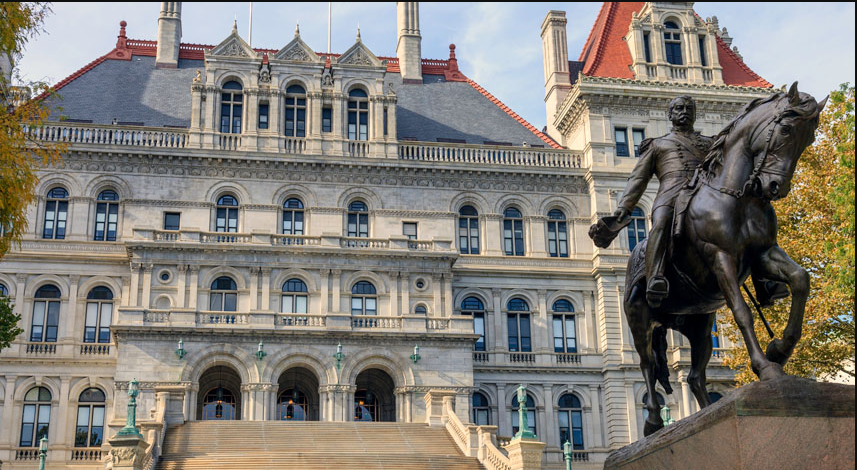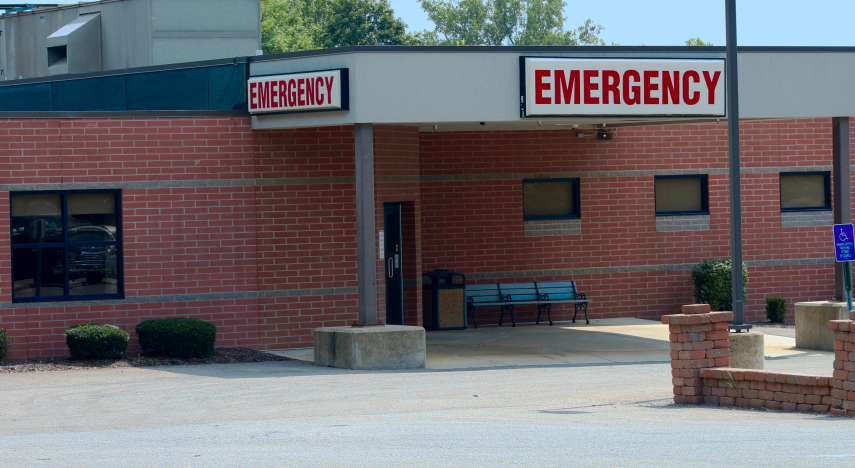
New York State Budget Analysis and Financial Reporting
State Comptroller DiNapoli provides independent monitoring, oversight and analysis of the State's fiscal position. He regularly issues reports on budget and policy issues, economic trends, and financial reports.
Featured Dashboard
Federal Funding and New York
HOW FUNDING SUPPORTS SERVICES IN NEW YORK
Budget resolutions passed by the 119th Congress will lead to a dramatic restructuring of the federal-state relationship. This online resource details the vast array of services that federal funding supports amid the continued uncertainty in Washington over potential cuts for states, including funds for Medicaid and other health programs, education, social welfare, transportation, public protection and other vital programs.

Obstacles to Independence: Financial Challenges Facing Young Millennials and Gen Z
Student Loan Debt, Rising Housing Costs, and High Unemployment Undermine Financial Independence
New York’s young adults — some members of Generation Z (born 1997-2012) and Millennials (born 1981-1996) — are facing a complex economic landscape, including higher unemployment rates, increasing costs, and larger debt burdens, that threatens their financial well-being. Rising household expenses, particularly for food, housing, and transportation, have outpaced growth in income. These conditions raise concerns about the State’s ability to retain its young workforce, critical for sustaining long-term growth.
Read Report
Workers With Disabilities Achieve Labor Force Gains, but Disparities Remain
Economic and Policy Insights
The labor force participation rate for those with a disability age 16 and over rose by 4.6 percentage points between 2019 and 2024, while it dropped 0.5 percentage points for the State’s nondisabled workforce. Nevethelesss, participation rates for people with disabilities remain far below the rest of the workforce. Continued efforts are need to diminish barriers to employment for people with disabilities.
Read Report
Report on Estimated Receipts and Disbursements
State Fiscal Years 2025-26 through 2027-28
The Office of the State Comptroller prepares this report as part of the "Quick Start" process established in the State Finance Law. The report includes revenue and spending projections through SFY 2027-28.
Read Report
Tax Provisions Under The Federal Reconciliation Bill
PROVISIONS DISPROPORTIONATELY BENEFIT THOSE WITH HIGHER INCOMES
This reports analyzes the federal tax provisions enacted under Public Law No: 119-21 and how they may impact New Yorkers. While the bill made permanent many tax changes included in the 2017 Tax Cuts and Jobs Act, it includes new tax breaks for seniors and the working class that are largely temporary. These minimal tax benefits, along with the significant cuts in safety net spending included in the legislation, will put a larger burden on New Yorkers trying to make ends meet.
View Report
New York’s Support for Aging New Yorkers
State Must Focus on Programs To Aid Seniors
As New York’s older population continues to increase and the federal funding that supports them becomes less predictable, understanding demand for services, how funding has addressed unmet needs and the challenges for fully supporting New Yorkers as they age is vital. This report focuses on programs administered by New York State Office for the Aging (NYSOFA), particularly in-home services. State funding for NYSOFA programs increased over 88%, or $114 million, in the New York State budget for State Fiscal Year (SFY) 2025–26 when compared to SFY 2018–19, yet waitlists for programs persist and data reporting makes it difficult to know how many are still left behind and where. The recent shift and reduction in federal support that will likely affect benefits available to many older New Yorkers make this an opportune time to review the major NYSOFA programs and funding addressed in this report.
Read Report
Report on the State Fiscal Year 2026 Enacted Budget and First Quarterly Financial Plans
State Faces $34.3 Billion Budget Gap Through 2029
New York State’s Financial Plan shows a growing structural budget deficit with a cumulative three-year budget gap of $34.3 billion, as forecasted by the Division of the Budget. The gap is up $7 billion since the January release of the Fiscal Year 2026 Executive Budget Financial Plan, and is attributable to downward revisions to the economic forecast and projected revenues, as well as increases in projected spending. When the projected costs of the federal reconciliation bill are added, the gaps as a share of spending are comparable to gap levels last seen in April 2009 during the Global Financial Crisis.
Read Report
The Doctor is...Out
Shortages of Health Professionals in Rural Areas
This report examines healthcare professional shortages in 16 rural counties throughout New York, looking at a range of professionals, including those practicing primary care, dental health and mental health. Shortages exist in all counties examined, and some counties have no pediatricians or Ob/Gyn doctors at all. The ability to access health care is an essential quality of life issue. Without access, rural New Yorkers may have worse health outcomes, and if unaddressed, shortages will get worse.
Read Report
New York State Agency Use of Overtime and State Workforce Trends
Economic and Policy Insights
New York State agency overtime costs increased 10.2% in 2024 for a total of $1.3 billion, while the number of overtime hours increased by 7.8%, or 1.8 million hours higher than the previous year. This was the second year in a row the workforce increased to an average annual total of 151,309, but headcount is still below where it was in 2019 and markedly lower than 15 years ago when it was over 177,000.
Read Report
Federal Actions Threaten to Exacerbate Rising Food Insecurity
Economic and Policy Insights
Proposed federal changes to the Supplemental Nutritional Assistance Program (SNAP), the nation’s largest program helping households obtain food, would increase costs to state governments, limit eligibility and reduce the value of future benefits. As an essential safety net program, SNAP benefits have traditionally been funded by the federal government; the proposed changes could weaken the program and lead to increased food insecurity in New York and nationally.
Read ReportFor questions, contact us [email protected]

